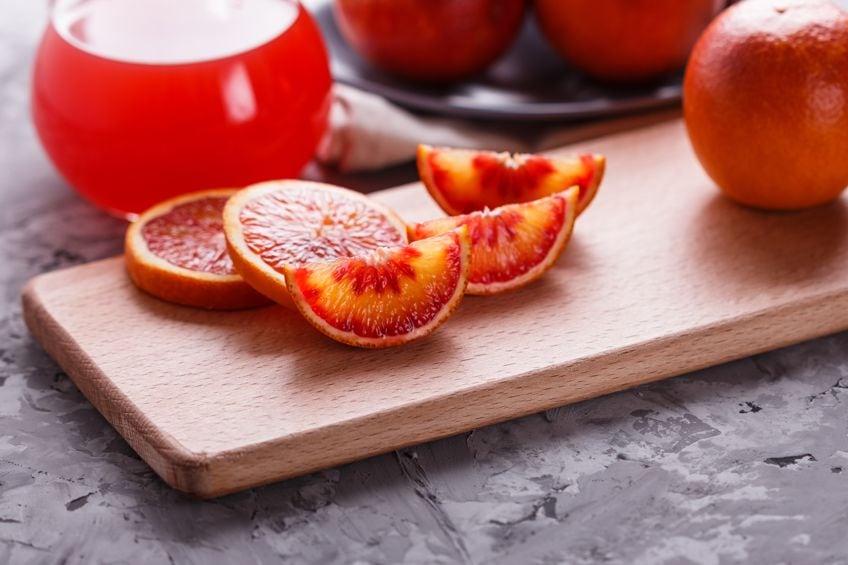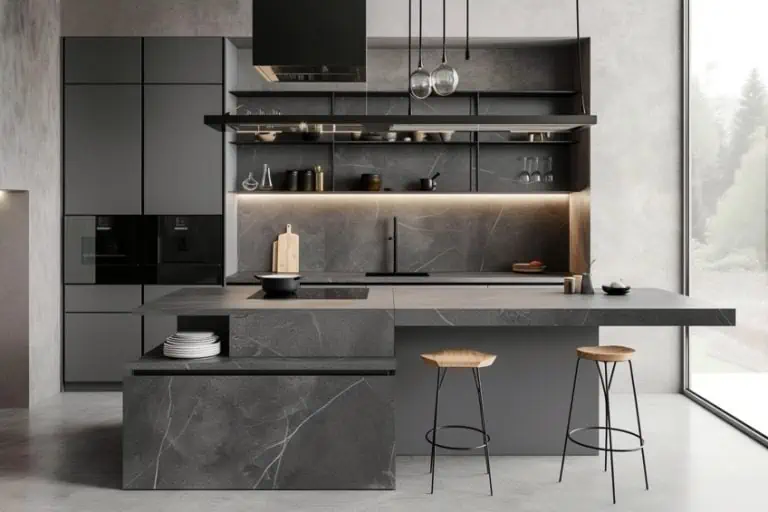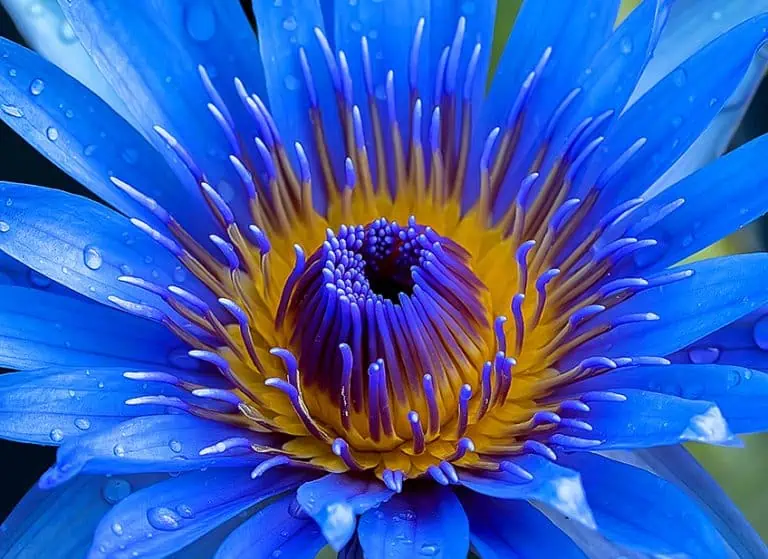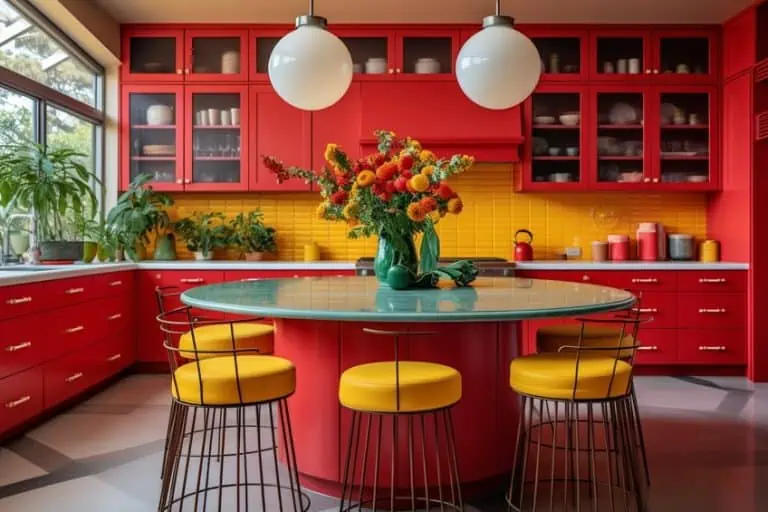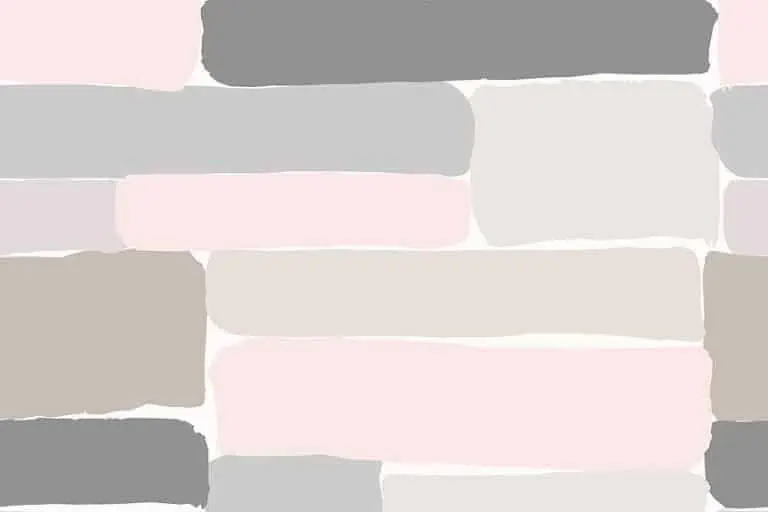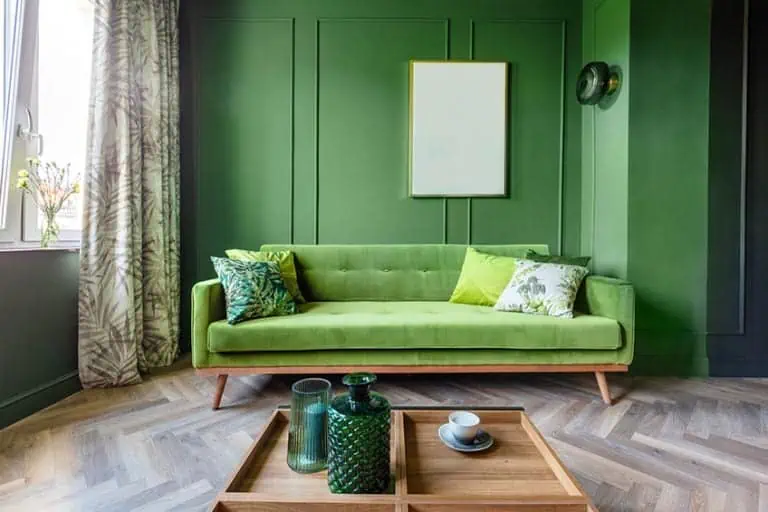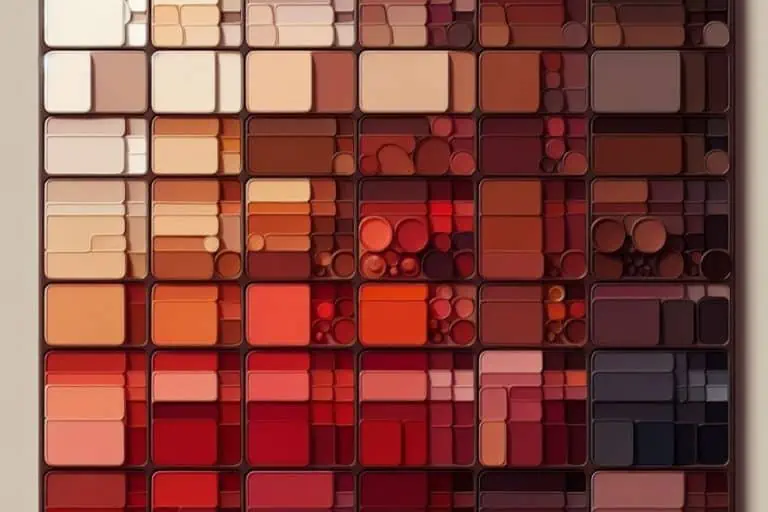Burnt Orange Color – An In-Depth Look at Burnt Orange Shades
This post may contain affiliate links. We may earn a small commission from purchases made through them, at no additional cost to you.
Orange is a color between red and yellow that consists of a range of shades, tints, and hues, with burnt orange being among them. When you think of burnt orange shades, it might bring up images of flames and fire. Over the years, burnt orange color has carved a special place in fashion and design. So, let us see what burnt orange is all about.
Table of Contents
All About the Burnt Orange Color
The color orange is a secondary color, a combination of both red and yellow. When considering optics and light, orange is a wavelength of about 585 to 620 nanometers (nm). The color is one of the longer wavelengths of visible light, next to red, which is about 700 nm. These colors have longer wavelengths that can easily be seen and attract attention. The burnt orange color can be described as being a darker to medium orange color, and its complementary color is azure, which is a shade of blue. When it comes to orange pigments, they fall mainly in the ochre and cadmium categories, which mostly absorb the blue light.
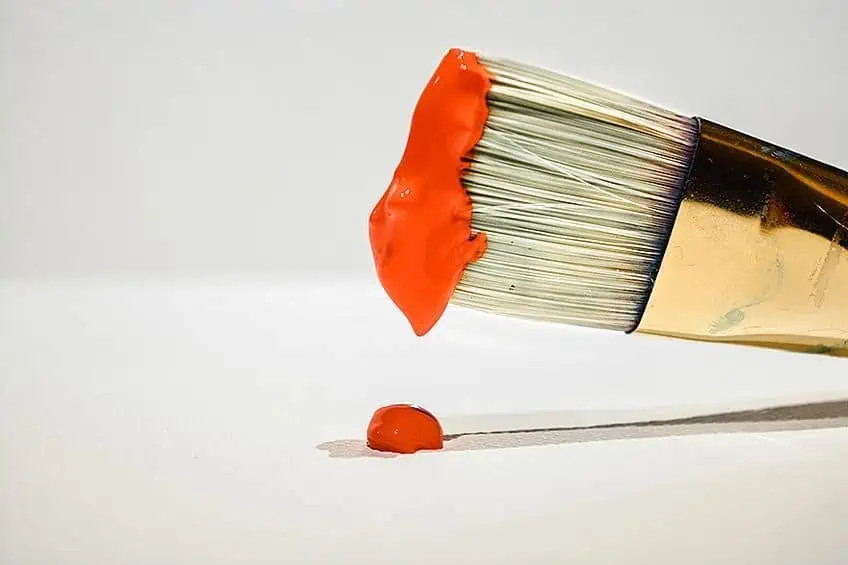
Burnt Orange: A Brief History
The name came to be around 1915 and has been taken on as the color for quite a few American Universities, namely Auburn University and the University of Texas. Both of these institutions disagree on the description of burnt orange. The University of Texas insists that the burnt orange color has undertones of blue. This seems to be the more popular description, as Pantone agrees with the blue undertone version.
The University of Texas seems to play a big role in the discovery and use of burnt orange. The university football team, known as the Texas Longhorns, took on the color for their team. The original colors of orange and white were used for many years, which slowly grew darker as the years went by. Many other learning institutions also claimed orange and white colors, so the University of Texas came up with a different shade of orange, which became known as “burnt orange”.
This burnt orange color, also known as “Texas orange,” was used from the early 20th century until World War Two.
The dye that was used to make the burnt orange eventually became unavailable. The uniforms then went back to the original orange and white. The burnt orange color was brought back some years later by the coach, Darrel Royal. The color then later became the official color of the university. The color is even legally protected and trademarked, so you cannot use what is also known as Pantone 159 for business purposes. The color has become synonymous with everything Texan, like the color of a steer hide.
The color orange and the various shades along with burnt orange, burnt sienna, and burnt umber have been used throughout history in art. Orange pigments have been used since ancient times and many famous artists used shades of orange in their paintings. For example, The Cardinal (1510) by the artist Raphael. Both Van Gogh and Toulouse-Lautrec also loved to use the color orange in their paintings.
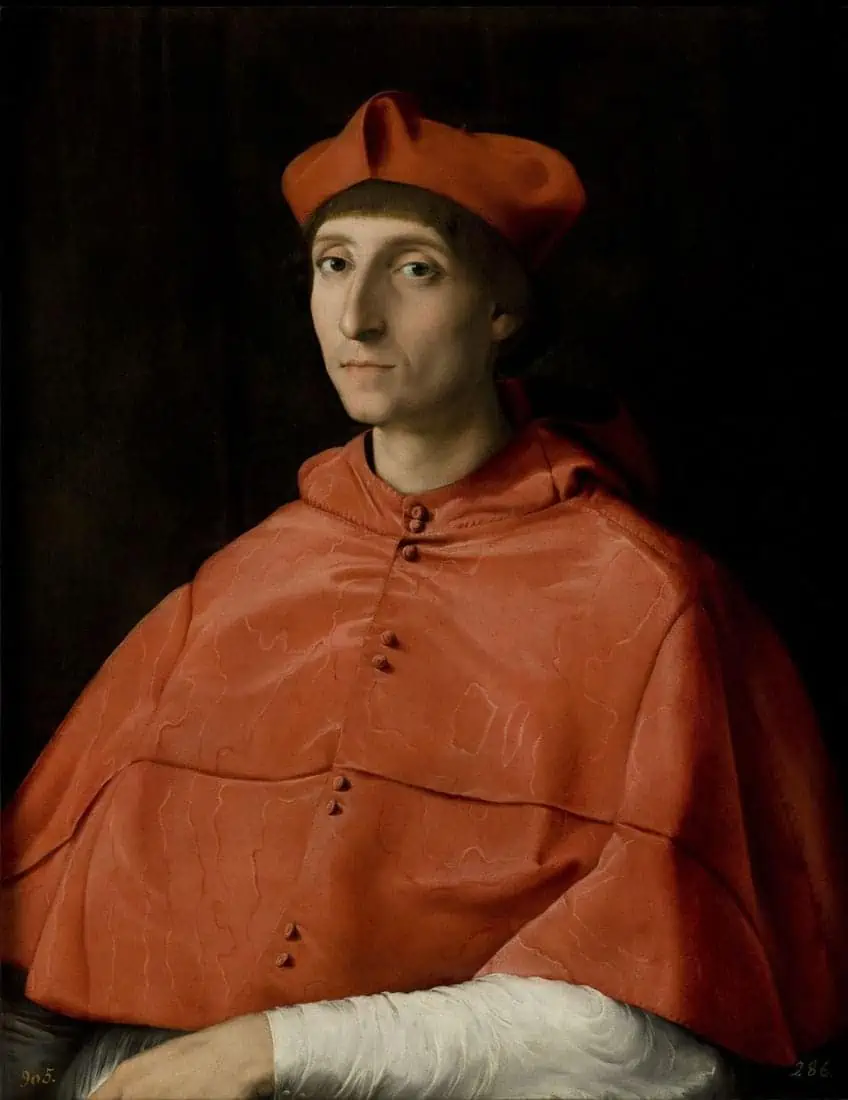
The Cardinal (1510) by Raphael; Raphael, Public domain, via Wikimedia Commons
Today, there are various shades of burnt orange that are used in fashion, website design, and interior design. Burnt orange became particularly trendy in the 1970s and was popular as an interior design color. As with all trends, they fade but come back after a few years. The specific burnt orange color has also been used elsewhere in industries, for example, the cylinder for refrigerant R407C is burnt orange.
Meaning of Burnt Orange
As with all colors, burnt orange can have both positive as well as negative associations. The burnt orange color can be seen as warm and associated with togetherness, fire, and comfort. However, it can also represent selfishness, stubbornness, aggression as well as pride. Other positive associations include:
- Energy
- Stimulating
- Creativity
- Autumn
- Fascination
- Happiness and joy
Burnt Orange Shades
The various burnt orange shades can have different intensities, saturation as well as tone, which creates a diverse mix of shades and tints. A color shade has more black, while a tint has more white. You can easily search for a specific color online by obtaining the hex code. You can also find out the color percentages used for online graphics, which are represented as your red, green, and blue (RGB) color code, and for printing, which is your cyan, magenta, yellow, and black (CMYK) color code.
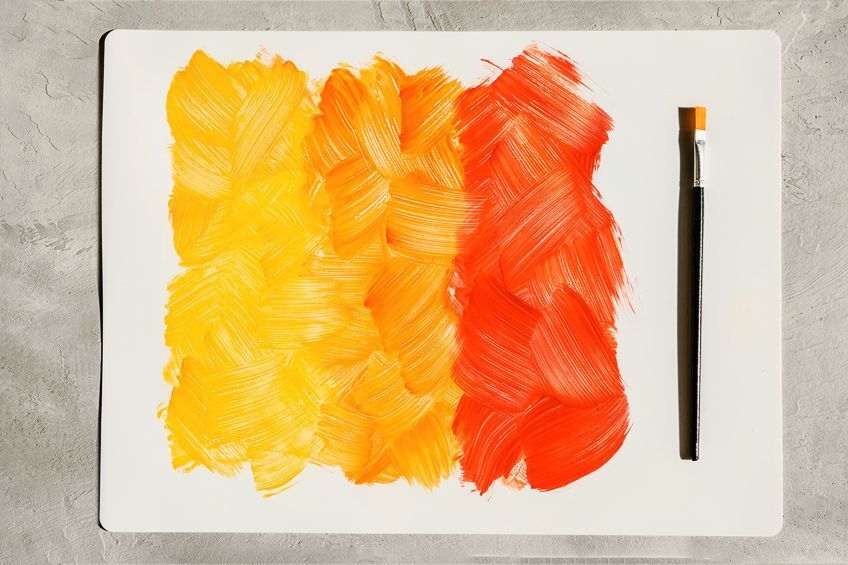
Burnt Orange Color
This is your basic burnt orange color, which can be described as a strong, dark to medium orange. This particular shade of orange has more of a red undertone as the percentage of red is quite high.
The best contrasting color to use in this case would be something close to navy blue.
| Burnt Orange Shade | Burnt Orange Color Hex Code | CMYK Burnt Orange Color Code | RGB Burnt Orange Color Code | Burnt Orange Color |
| Burnt Orange | #cc5500 | 0, 58, 100, 20 | 204, 85, 0 |
Dark Burnt Orange Color
When compared to the above-burnt orange color, you will notice that this shade of burnt orange is darker. The dark burnt orange color also has slight undertones of blue, which works best with other cooler colors.
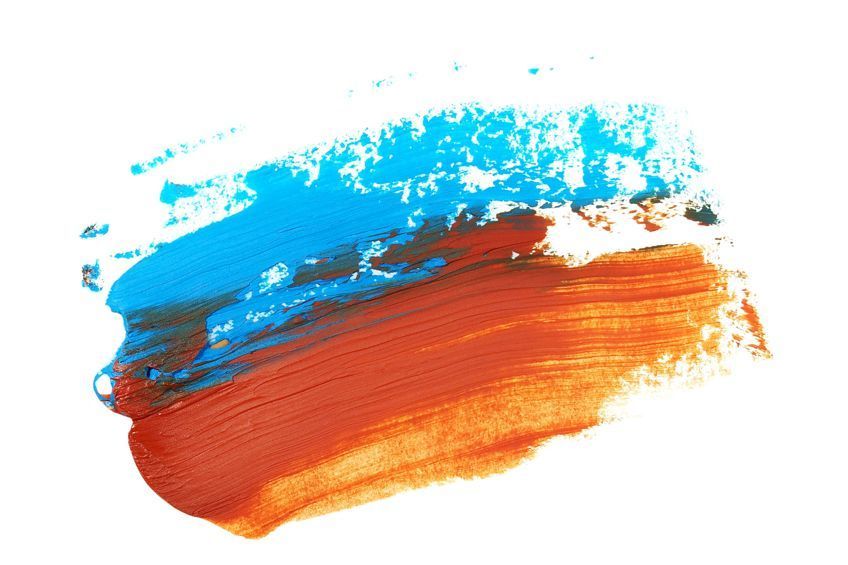
| Burnt Orange Shade | Burnt Orange Color Hex Code | CMYK Burnt Orange Color Code | RGB Burnt Orange Color Code | Burnt Orange Color |
| Dark Burnt Orange | #b35512 | 0, 53, 90, 30 | 179, 85, 18 |
Light Burnt Orange Color
This is a more saturated color that creates a moderate shade of orange. The light burnt orange color is not the same as your light orange, which is a pale yellow-orange and can be seen as a neutral color.
When looking at your web graphics, it will have more of a red undertone, while printing the color out can produce more of a yellow undertone.
| Burnt Orange Shade | Burnt Orange Color Hex Code | CMYK Burnt Orange Color Code | RGB Burnt Orange Color Code | Burnt Orange Color |
| Light Burnt Orange | #d58a55 | 0, 35, 60, 16 | 213, 138, 85 |
Rusty Orange Color
Some might say that the rust color and burnt orange are similar but are more of an orange-brown color. This color is close to the one used for photographic safelights, the lights that are used in photographic lightrooms.

| Burnt Orange Shade | Burnt Orange Color Hex Code | CMYK Burnt Orange Color Code | RGB Burnt Orange Color Code | Burnt Orange Color |
| Rusty Orange Color | #b7410e | 0, 64, 92, 28 | 183, 65, 14 |
Crayola Burnt Orange
This was one of the original orange Crayola colors that was introduced in 1954. You might notice the obvious red undertone. Today, you can only find the burnt orange color in a box set of 64 crayon colors and higher.
This is a beautiful warm shade of orange.
| Burnt Orange Shade | Burnt Orange Color Hex Code | CMYK Burnt Orange Color Code | RGB Burnt Orange Color Code | Burnt Orange Color |
| Crayola Burnt Orange | #ff7034 | 0, 56, 80, 0 | 255, 112, 52 |
Mixing a Burnt Orange Color With Acrylics
When mixing paint colors, it is best to gain a little understanding of color theory and get to know the colors that can be found on a color wheel. The basics we all know is that you have primary colors as well as secondary colors. Orange is one of your secondary colors, so burnt orange will sit somewhere between red and yellow when looking at the color wheel.
When you want to create brown, you can combine a primary color with a complementary color. These colors sit opposite one another when looking at the color wheel. For example, you can create brown by mixing green and red, or blue and orange. Burnt orange can be defined as something that looks between brown and orange.

You will also need to understand a few terms when it comes to color theory, so you can create colors more accurately. For example, you can create a color tint by adding white to a color, or a shade by adding small amounts of black. Always add in small amounts of paint until you reach the color you are looking for. You could also use navy blue instead of black or use a complementary color, which helps to make a rich darker color.
When mixing colors, it is also a good idea to keep a color palette where you can test out and compare the various shades and hues you create. To make a burnt orange, you can do either of two ways.
- Use a darker orange you may already have and add very small amounts of blue paint.
- Create orange by mixing equal amounts of yellow and red, then to this add your small amounts of blue or burnt sienna.
- Try using pale cadmium yellow or lemon yellow and cadmium red or cadmium rose.
- The trick is to mix in small amounts and experiment until you reach a burnt orange color you are happy with.
When painting, and using colors in a tube, depending on the manufacturer, some may come out more red, while others are more orange. An ideal way to obtain the color you want is to mix it yourself. Tubes of paint can cost a lot of money, so mixing your own colors can help save money as you are using colors you most likely already have and use.
Mixing paint does take practice, so do not give up on the first try, experiment, and have fun creating different colors.
Burnt Orange Designs
Burnt orange is a more muted color that is not as bright and energetic as your orange or red colors. The color is perfect to add a warm and welcoming color to a room, without it being overwhelming. Since red and orange work at stimulating appetite and conversation, burnt orange can work well in a dining area. Many associate burnt orange with fire and autumn and with holidays like Thanksgiving or Halloween. However, burnt orange can be a great color to use all year round to provide a warm and welcoming atmosphere.
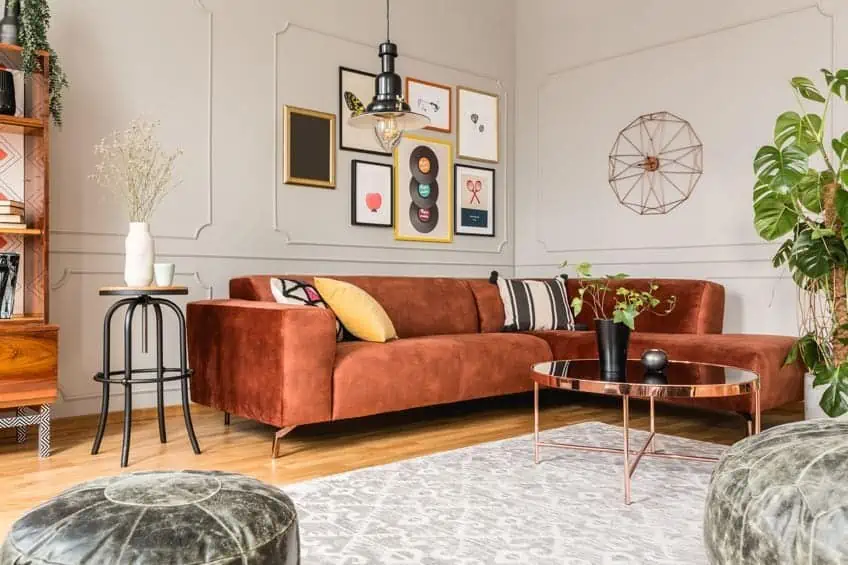
Interior Design Ideas With Burnt Orange
When using burnt orange paint, it can be a bold choice. However, even if you decide to use it on all the walls, it works better with contrast, so include neutral shades where you can. Other colors that go with burnt orange include your various shades of blue, grays, certain shades of green and red. An accent wall can also be another idea if you do not want to go all out with the color, but still want to bring in the warmth of burnt orange.
You can also bring in burnt orange shades using furniture. However, to make a statement, one piece is recommended, so it can become the focal point. You can then also accessorize the room with burnt orange as well.
Accessories like pillows or lampshades can also be changed, so you are not stuck with a certain color all the time. The aim is to also make sure you keep the balance of colors in a room, so everything ties in together. You can combine burnt orange with grays as well as deeper shades of blue. To make a more vivid palette, you can consider using burnt orange with peach and something like a mint green.
Burnt Orange and Fashion
As with trends, they come and go, as with the rust color, which became quite popular in 2018. Although the color of the year and month is constantly changing, they remain popular to many throughout the year. This includes burnt orange, which can be quite a striking color to wear and is perfect for those cold autumn months.

Denim is always the go-to item for many as you can dress it up or down, although it is more of a casual choice. You can easily pair blue denim with burnt orange for a great contrasting look. Burnt orange shades can also go with similar tones of green. Add a splash of gold to an outfit with burnt orange for a more sophisticated look, especially if it is something like gold jewelry accents. Speaking of accessories, you can bring in a touch of burnt orange by choosing a pair of shoes or a handbag.
Now that you have learned a little bit more about burnt orange, you can start using it in your art and designs. Create an amazing piece of wall art to place in your home, or the next time you go out, make sure to accessorize with a burnt orange handbag.
Frequently Asked Questions
What Color Is Burnt Orange?
Some may refer to burnt orange as terracotta or even amber, however, it is more of a deeper shade of orange. It is not as vivid as tangerine and it is not quite a neutral color, but it does create a nice balance between these two extremes.
Is Burnt Sienna the Same as Burnt Orange?
Burnt orange is more of a rust color that is a deeper orange, and some say it has blue undertones. Burnt sienna is more of a brown shade that has orange undertones. Raw sienna also has more orange-yellow and raw umber is brown with green undertones.
Is Burnt Orange a Popular Color?
Burnt orange may not be as popular as your green, blues, and reds, but it has been one of the color trends for 2019 as well as 2020. The color even trended during the 1970s in both clothing fashion and décor.
Are There Colors That Go With Burnt Orange?
The burnt color orange works best with various shades of blue including navy blue, azure, teal, even royal blue. The color also goes with neutral tones like gray, cream, white, and other shades of brown. A green and red color palette can also work well, something like an autumn color palette.
Megan is a writer and researcher who graduated from the University of Cape Town with a degree in Social Sciences, specializing in Psychology and Environmental Science. Her passion for knowledge and leaving a positive impact has fueled her current work in conscious and sustainable growth in Southern Africa. Megan’s love of nature has also led her to train as an animal behaviorist. She works part-time training and rehabilitating dogs. Megan is interested in the physical and psychological effects of colors in our environment on our mood and well-being. In addition, she is concerned with how art and creativity have been an integral part of human society. Megan van Schoor has been writing blog posts on the topics of painting, drawing, and color theory for acrylgiessen since 2021.
Learn more about Megan van Schoor and about us.
